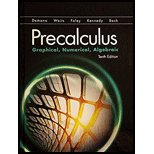
Concept explainers
a)
To find: The long-term implications for the players.
Given Information:
The graph showing the minimum salaries and the average salaries for the baseball ball players in the 18-year period.
Explanation:
From the graph it follows that the average salaries of the players have increased a lot in the period of 18 years.
Therefore, the players will be happy as they are earning and also because they are getting a chance to play in the major leagues.
b)
To find: The long-term implications for the team owners.
Given Information:
The graph showing the minimum salaries and the average salaries for the baseball ball players in the 18-year period.
Explanation:
From the graph it follows that the average salaries of the players has increased a lot in the period of 18 years.
So, the team owners have to pay more in order to get best players in their teams. But it is investment for them as if their teams win they will earn a lot more than what they are paying the players.
c)
To find: The long-term implications for the baseball fans.
Given Information:
The graph showing the minimum salaries and the average salaries for the baseball ball players in the 18-year period.
Explanation:
From the graph it follows that the average salaries of the players have increased a lot in the period of 18 years.
Since the 1995 season was shortened the fans might be sad as they were not able to see more matches.
Now, as the salaries of the players depend upon their performance in the matches also, so the players work hard to improve their games.
So, during the period of time the fans might be pretty happy to watch their favorite players playing and hitting the home runs.
Chapter 1 Solutions
EBK PRECALCULUS:GRAPHICAL,...-NASTA ED.
 Calculus: Early TranscendentalsCalculusISBN:9781285741550Author:James StewartPublisher:Cengage Learning
Calculus: Early TranscendentalsCalculusISBN:9781285741550Author:James StewartPublisher:Cengage Learning Thomas' Calculus (14th Edition)CalculusISBN:9780134438986Author:Joel R. Hass, Christopher E. Heil, Maurice D. WeirPublisher:PEARSON
Thomas' Calculus (14th Edition)CalculusISBN:9780134438986Author:Joel R. Hass, Christopher E. Heil, Maurice D. WeirPublisher:PEARSON Calculus: Early Transcendentals (3rd Edition)CalculusISBN:9780134763644Author:William L. Briggs, Lyle Cochran, Bernard Gillett, Eric SchulzPublisher:PEARSON
Calculus: Early Transcendentals (3rd Edition)CalculusISBN:9780134763644Author:William L. Briggs, Lyle Cochran, Bernard Gillett, Eric SchulzPublisher:PEARSON Calculus: Early TranscendentalsCalculusISBN:9781319050740Author:Jon Rogawski, Colin Adams, Robert FranzosaPublisher:W. H. Freeman
Calculus: Early TranscendentalsCalculusISBN:9781319050740Author:Jon Rogawski, Colin Adams, Robert FranzosaPublisher:W. H. Freeman
 Calculus: Early Transcendental FunctionsCalculusISBN:9781337552516Author:Ron Larson, Bruce H. EdwardsPublisher:Cengage Learning
Calculus: Early Transcendental FunctionsCalculusISBN:9781337552516Author:Ron Larson, Bruce H. EdwardsPublisher:Cengage Learning





